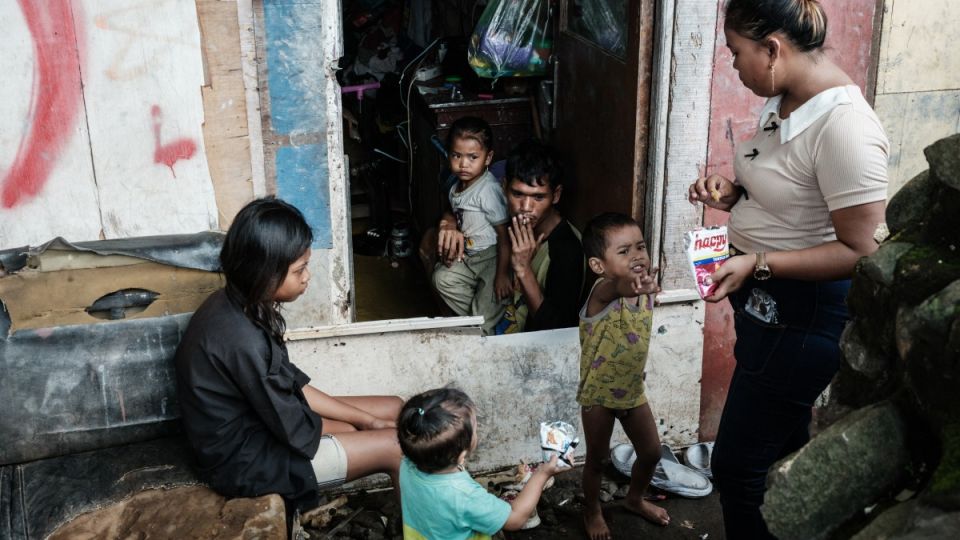June 17, 2025
JAKARTA – The government plans to push up the poverty line in a move that would bring Indonesia’s measure closer to that of the World Bank, even though that could be politically risky, as it would categorize more people as poor.
National Economic Council (DEN) head Luhut Pandjaitan told reporters on Thursday that a revision had been on the cards for some time as “changes had to be made.” He suggested the revision might take place this year “if the President agrees.”
DEN member Arief Anshory Yusuf, whom Luhut described as an expert in the field, said on Monday that the redefinition was being worked on by his office alongside Statistics Indonesia (BPS), the National Development Planning Agency (Bappenas) and the Statistics Society Forum.
Indonesia currently measures poverty based on monthly expenditure, defining as poor individuals who spend less than Rp 595,243 (US$37). The DEN proposes lifting that to at least Rp 765,000, which Arief said was not too far off from the World Bank’s standard.
The World Bank made some changes to its poverty measurement earlier this month, the most important being the use of 2021 purchasing power parity (PPP) as opposed to the one from 2017 used previously.
The WB raised the international poverty line to $3 per individual per day from previously 2.15 dollars, meaning a person consuming less than $3 worth of goods and services a day is considered extremely poor.
The WB’s specific poverty line for lower-middle-income countries was lifted to 4.20 dollars from 3.65 dollars and that for upper-middle-income countries, such as Indonesia, was upgraded to 8.30 dollars from previously 6.85.
In monthly terms, that standard translates to about Rp 1.5 million in spending per individual per month, and under this definition, 68.2 percent of Indonesia’s population, or 194.4 million people, fall below the poverty line.
Indonesia was moved into the WB’s upper-middle-income category in 2023, when the archipelago’s gross national income (GNI) reached $4,580 per capita, putting it just within the upper-middle-income range of $4,446 to $13,845.
Read also: Govt is redefining poverty line after two decades, DEN says
Given that Indonesia’s per-capita GNI was still close to the low end of the range, the WB’s upper-middle-income poverty line seemed “too high” for measuring poverty in Indonesia, Arief told Bisnis.
Thus, the council proposed to set the national poverty line in accordance with the WB’s lower-middle income poverty line of $4.20, or about Rp 765,000 per month.
Based on the current poverty line, less than 9 percent of the country’s population, or about 24 million people, are categorized poor, as shown in a BPS survey from September last year.
Read also: Poverty rate at historic low despite uptick in inequality
One motivation for the planned revision was that the poverty line affected the government’s economic policy, said Arief. For example, if the poverty rate was low, the government would not feel a need to focus its energy on pushing labor-intensive industries.
Secondly, the revision was needed to ensure accountability and public confidence in the authorities, because people would question the low official poverty rate if it were out of touch with the reality they experienced on the ground, like malnutrition or stunting, said Arief.
“People’s dissatisfaction, their eroding trust in the government, that’s what’s more dangerous,” he said, as quoted by Bisnis.
He explained that two factors complicated the move to raise the poverty line, one being politics, given that raising the bar would automatically classify more people as poor, and the other being concern about a ballooning social aid budget, a worry Arief dismissed as baseless.
Syafruddin Karimi, an economist at Andalas University, told The Jakarta Post on Friday that using the lower-middle-income reference when the country belonged to the group above “decreases the ambition standard and weakens the state’s commitment to social justice principles”.
However, he nevertheless expressed appreciation for the intention to raise the poverty line, which illustrated “political bravery to side with social reality,” since the standard that the country had been using was too low “to capture the real prosperity dimension.”
He went on to say that President Prabowo Subianto was mostly recognized as a leader with populist tendencies, which made the agenda politically risky, since doing so would increase the number of poor people statistically.
On the other hand, Syafruddin said, this could become a political opportunity, as raising the bar could shift the narrative toward a productive populism when wrapped together with social aid and programs to support labor-intensive industries.
“This step could increase public trust, show his support for the poor and reinforce the government’s legitimacy amid high expectations. If Prabowo wants to be remembered as the President that does not just peddle promises but who takes action, then lifting the poverty line and strengthening social policy responses is a crucial step that is reasonable to take,” said Syafruddin.
Bank Permata chief economist Josua Pardede also questioned the plan to use the WB’s lower-middle-income reference but noted that it would at least set a higher standard than the status quo.
“When it’s enforced, it will provide a more realistic picture of the number of poor people and create an argument for stronger, more targeted social security policies,” Josua told the Post on Friday.
“Although it is risky for optics, the plan is in line with the President’s order that emphasizes support for the poor. The government is highly likely to follow through with the plan, which will come together with expanding aid programs to maintain public support and strengthen his social policy legitimacy,” he added.


